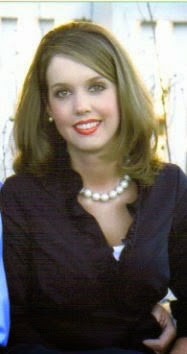The exhibit hall was of course busy as usual, and I did find a couple of things that were interesting, most notably SMARTkapp
 |
| SMARTkapp sample |
and Timestream
SMARTkapp has SMART technology embedded into a glassboard that allows for easy and clear sharing of what is written on the board through scanning a QR code. Now, it is of course as easy to just take a picture of the glassboard and share this via your phone, but the image may not be as crisp, the lighting not be optimal. In addition, through the sharing of the QR code, you can get others to view what is going on on the board in real time, even though they may not be in the same room.. Check it out at
smartkapp.com.
Timestream (
http://www.ntrepidcorp.com/timestream/ )is a timeline software that allows for more complex display of connections, filtering, searches and other interesting ways of bringing a historical, political or other time line to life. People can work jointly on a project, turning this into a potentially powerful tool. I want to share this with a couple of faculty members in History and Political Science for starters to see what they think of it. Let me know if you are interested
My presentations for Wednesday covered Student success, digital collections, a history lesson, and open textbooks
"Student Success is Everybody's Business" was presented by Student Affairs, Assessment and IT folks from University of South Carolina and Grinnell (Carleton College could unfortunately not come). The main take aways for the presentation were that different groups of stakeholders need to agree on a common vocabulary to ensure that communication across multiple units is successful. Their primary focus was on gathering data and assessing student performance and life outside the classroom, closing the loop between sending someone to advising, showing how this improved a grade, showing how extracurricular activities impact student performance, and making this data available to those folks who can benefit from it the most. I am not sure that I heard them say students would have access to the data -- but I may just not remember correctly.
The common language would also allow to break through those data silos that we are all so familiar with. One key recognition was that if we approached student records similar to health records, we can learn from how health care systems deal with information and how they make use of it in various settings, for different outcomes.
They mentioned Angela Duckworth's TEDtalk "The key to success? Grit":
http://www.ted.com/talks/angela_lee_duckworth_the_key_to_success_grit as inspiration for some of this work
Their list of points to remember from this session were
- Mine your data
- Develop near real time alerts
- Predictive modeling with right data streams
- Train people to create rich records and to close the loop
- Design and build systems that fit your institution
- Create systems that resonate and scale
- Work together because student success is everybody's business.
"The Browning Letters Project" covered the history of the digitization of the Browning letters, in particular at Wellesley and Baylor. The key takeaway really was that folks who have valuable, original resources need to consider working together to allow a broader access to such resources through an open access, web based interface to make life easier for everyone. I had not thought about the issue of insurance when sending 19th century documents via snail mail...
The keynote by Doris Kearns focused on lessons from her book The Pitbull on Leadership Lessons of History from the American Presidents.. Her stories, and she is a great story teller, centered around various obstacles Lincoln, the Roosevelts, and Johnson had to overcome -- and how they did this. Quite entertaining.
One of the things I did not realize was what effect the GI bill from June 22, 1944, had on the creation/widening of the US middle class. She stated it as a creation of the middle class.
My highlight presentation of the day, though, was the SUNY talk on open textbooks. The talk focused on shifting library responsibilities from curating other content to creating and curating their own content - -and the first step was a grant to create free open digital textbooks to save the students of the SUNY system money. The numbers speak for themselves, as they are spending about $3000 on payment for the faculty who writes the manuscript, with the help of a librarian and instructional designer. Librarians also find peer reviewers, copy and manage edits and publish the final book. While the books themselves are not necessarily perfect at this point (eg, accessibility was apparently not considered, and interactivity was deemed not necessary), the process is rather straightforward and the benefits appear to be quite obvious.
http://opensuny.org/omp/index.php/SUNYOpenTextbooks
Note that these are not necessarily texts for large enrollment classes -- but small classes, specialized topics also need textbooks, and these tend to be just as expensive as interactive, 3d Biology or World History books.
And then there is my 60 second giraffe that I built in the exhibit hall...
 |
| Lego giraffe |
















































